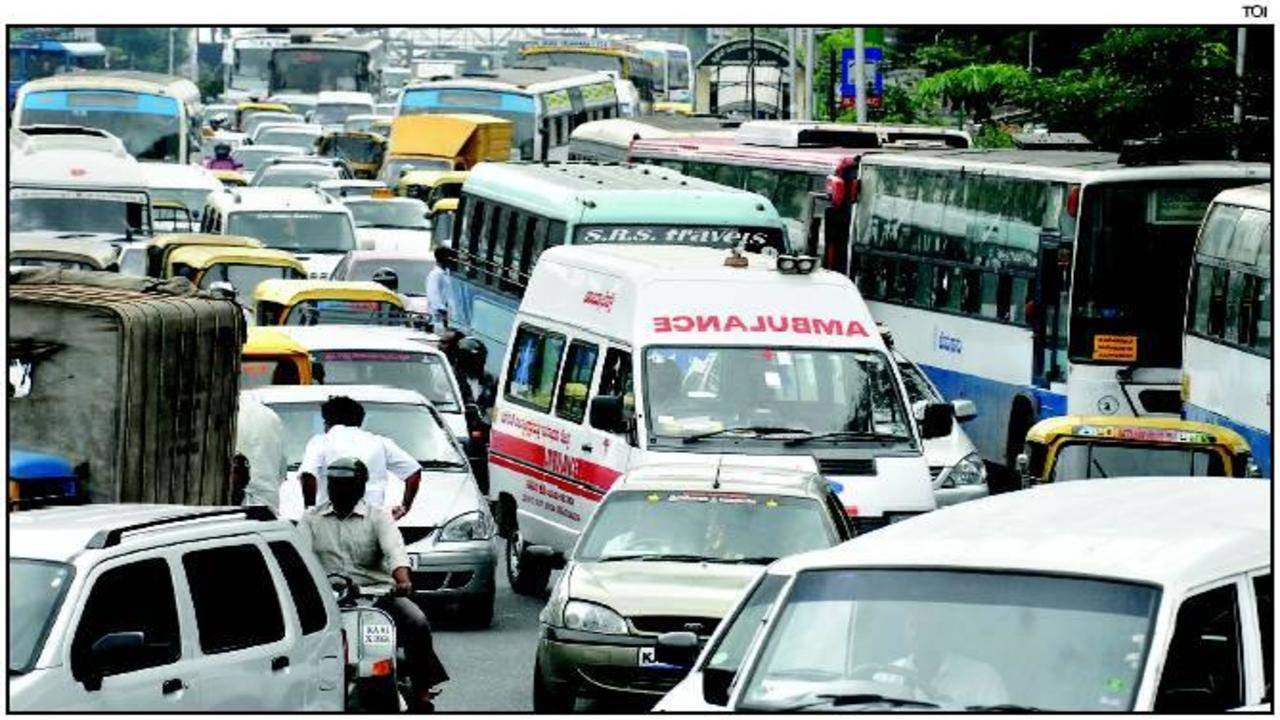Imagine you or a loved one experiencing a medical emergency, and the clock is ticking. But there’s a problem: heavy traffic is blocking the way to the nearest hospital. These ground ambulance challenges can lead to crucial delays in receiving timely medical care. That’s where the air advantage comes in. In this article, we will explore how air ambulances overcome the obstacles of heavy traffic and provide a crucial lifeline in emergency situations. So buckle up and get ready to soar above the ground ambulance challenges!

I. Traffic Congestion and Ground Ambulance Challenges
A. Introduction to traffic congestion
Traffic congestion refers to the condition where there is a significant increase in the number of vehicles on the road, resulting in slower speeds, longer travel times, and general discomfort for commuters. It is a common problem in many urban areas, especially during peak hours. This congestion not only affects regular commuters but also poses serious challenges for emergency services, particularly ground ambulances.
B. Challenges faced by ground ambulances in heavy traffic
Ground ambulances play a crucial role in providing emergency medical care, but they face numerous challenges when navigating through heavy traffic. The most significant challenge is time. When traffic congestion is at its peak, ambulances are often delayed in reaching their destinations, which can have severe consequences for patients in need of immediate medical attention. Additionally, the stress and pressure on ambulance drivers in such situations can lead to increased risk of accidents, further complicating the already difficult task of providing timely medical care.
II. The Need for Quick Medical Response
A. Importance of timely medical intervention
Timely medical intervention is essential in emergency situations, as it can significantly improve patient outcomes. When a person is suffering from a critical condition such as a heart attack or severe trauma, every minute counts. Immediate medical attention can make a difference between life and death, and can prevent further deterioration of the patient’s condition.
B. Impact of delayed medical response on patient outcomes
Delayed medical response due to traffic congestion can have a grave impact on patient outcomes. Longer response times can lead to worsened health conditions, increased risk of complications, and even death. For instance, in cases of cardiac arrest, the chances of survival decrease by 7-10% for every minute of delay in initiating cardiopulmonary resuscitation (CPR). Therefore, finding efficient solutions to overcome the challenges posed by traffic congestion is crucial for ensuring rapid medical response and improving patient outcomes.
III. Introduction to Air Ambulances
A. Definition and purpose of air ambulances
Air ambulances, also known as medical helicopters or medevac helicopters, are specialized aircraft equipped to transport patients who require immediate medical care over long distances or in challenging environments. These helicopters are staffed with highly trained medical professionals who can provide critical care during the flight. Air ambulances are designed to respond rapidly and effectively to emergency situations and are primarily used for inter-hospital transfers and emergency scene responses.
B. Types of air ambulances available
There are two main types of air ambulances – dedicated helicopters and fixed-wing aircraft. Dedicated helicopters are the most common type and are primarily used for short to medium distances. They can land in specific locations, such as helipads and hospital rooftops. On the other hand, fixed-wing aircraft, such as airplanes and jets, are used for longer distances and can cover vast geographical areas. These aircraft can take off and land on runways, making them suitable for inter-city or even inter-country medical transfers.

IV. Advantages of Air Ambulances in Heavy Traffic
A. Faster response times
One of the primary advantages of air ambulances over their ground counterparts is their ability to significantly reduce response times. Unlike ground ambulances that are susceptible to traffic congestion, air ambulances can bypass congested roadways and reach their destinations quickly. This rapid response time can make a critical difference in emergencies where minutes can be a matter of life and death.
B. Ability to bypass traffic congestion
Air ambulances have the advantage of using three-dimensional airspace rather than being confined to the limitations of ground transportation. They can navigate directly over congested areas, avoiding delays caused by traffic congestion. This ability to bypass traffic congestion allows air ambulances to reach patients in need faster and ensures that medical interventions can be initiated promptly.
C. Enhanced accessibility in remote or inaccessible areas
In addition to bypassing traffic congestion, air ambulances provide enhanced accessibility in remote or inaccessible areas. They can reach patients in rural locations, disaster-stricken areas, or places with geographical obstacles such as mountains or dense forests. In emergencies where time is of the essence, air ambulances can provide a lifeline by swiftly transporting patients from these remote areas to advanced medical facilities with specialized services.
V. Medical Capabilities of Air Ambulances
A. Availability of advanced medical equipment
Air ambulances are equipped with advanced medical equipment that enables them to provide critical care during the flight. These aircraft carry a range of medical supplies, including cardiac monitors, defibrillators, ventilators, and medication, allowing the medical crew to stabilize and treat patients while in transit. This availability of advanced medical equipment ensures that patients receive the necessary medical interventions promptly, even during the transport phase.
B. Skilled medical personnel on board
Air ambulances are staffed with highly skilled and experienced medical professionals who are trained to provide specialized care in critical situations. These professionals, including doctors, nurses, and paramedics, possess the expertise to manage and stabilize patients with various medical conditions. Their presence on board ensures that patients receive continuous medical attention and monitoring throughout the transfer, maximizing their chances of recovery.
VI. Safety Considerations in Air Ambulance Operations
A. Training and regulations for air ambulance crew
Air ambulance crew members undergo extensive training to ensure the highest level of safety and competency in their operations. They receive specialized education and certifications in aeromedical procedures, aviation safety, and emergency medical care. These regulations and training requirements are in place to maintain a standard of excellence in air ambulance operations and prioritize patient safety.
B. Aircraft safety and maintenance standards
Air ambulance operators adhere to rigorous safety standards for aircraft maintenance. Regular inspections, maintenance procedures, and safety checks are conducted to ensure the airworthiness of the aircraft. The aircraft used for air ambulance services are subject to compliance with aviation regulations and undergo routine safety audits. These stringent safety measures contribute to the overall reliability and safety of air ambulance operations.
VII. Cost Factors and Insurance Coverage
A. Cost comparison between ground and air ambulances
Air ambulance services typically incur higher costs compared to ground ambulances due to the specialized equipment, aircraft operation, and highly trained medical personnel involved. The costs associated with air ambulances can vary significantly depending on the distance traveled, the complexity of the medical condition, and other factors. It is worth noting that air ambulance services are usually covered by insurance policies, either partially or in full, making them accessible to those in need.
B. Insurance coverage for air ambulance services
Many health insurance plans offer coverage for air ambulance services, recognizing their importance in emergency medical care. However, it is essential for individuals to review their insurance policies and understand the terms and conditions related to air ambulance coverage. Some insurance plans may require pre-authorization or have specific limitations on the distance or medical conditions covered. It is advisable to consult with insurance providers and understand the coverage details to ensure maximum benefit in times of medical emergencies.
VIII. Coordination and Communication
A. Importance of efficient communication between air and ground ambulance services
Efficient communication between air and ground ambulance services is crucial for seamless coordination during emergency medical transfers. Ground ambulance crews play a vital role in identifying suitable landing zones for air ambulances, providing critical information about the patient’s condition, and coordinating ground support to facilitate a smooth transfer. Clear and effective communication channels enable both air and ground crews to work together as a cohesive team, ensuring optimal patient care and transfer.
B. Integration with emergency response systems
Air ambulance services are integrated into the broader emergency response systems to ensure effective communication and coordination. Emergency medical services (EMS) dispatch centers play a crucial role in coordinating the dispatch of air ambulances based on the severity and location of the emergency. Integration with EMS dispatch centers, as well as other emergency response systems, enhances the overall efficiency of emergency medical services and optimizes patient care.
IX. Limitations and Considerations
A. Weather constraints on air ambulance operations
Weather conditions can pose significant limitations on air ambulance operations. Adverse weather, such as strong winds, heavy precipitation, or low visibility, can affect the ability of air ambulances to safely operate. In such cases, ground ambulances may be the only viable option for medical transfer. The decision to use air ambulances in adverse weather conditions is made by experienced pilots who prioritize the safety of both the crew and the patients.
B. Availability and accessibility in rural areas
While air ambulances provide enhanced accessibility in remote areas, their availability may be limited by factors such as aircraft availability and sufficient infrastructure, including landing zones. In some rural areas, the absence of suitable helipads or airports can make the utilization of air ambulances challenging. Ensuring the availability and accessibility of air ambulance services in rural regions requires ongoing collaboration between healthcare providers, authorities, and infrastructure development.
C. Medical considerations and patient criteria for air ambulance transport
Not all medical conditions require air ambulance transport. Specific patient criteria, such as the severity and urgency of the condition, are considered when determining the appropriateness of air ambulance transport. Critically ill or injured patients who require advanced medical interventions during transport or need to be quickly transferred to specialized healthcare facilities are typically the primary candidates for air ambulance services. Medical professionals, in consultation with ground ambulance crews, make these decisions based on the best interest of the patient.
X. Conclusion
Air ambulances provide a crucial advantage in overcoming the challenges posed by traffic congestion and ensuring timely medical response. Their ability to bypass traffic, faster response times, enhanced accessibility in remote areas, advanced medical capabilities, and highly skilled medical personnel make air ambulances an invaluable component of emergency medical services. While there are limitations and considerations to be taken into account, air ambulances, when appropriately integrated into the broader emergency response systems, can facilitate rapid medical care and significantly improve patient outcomes.



